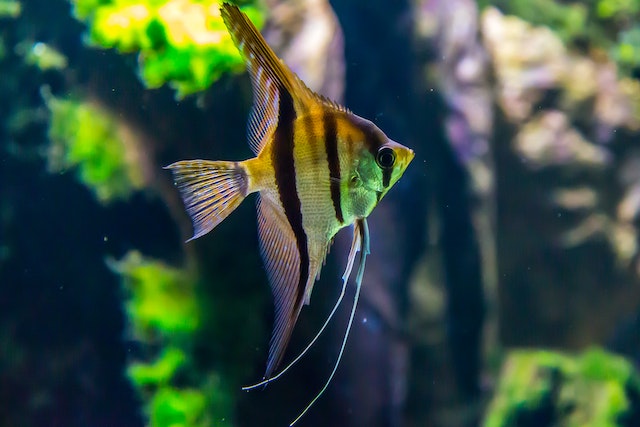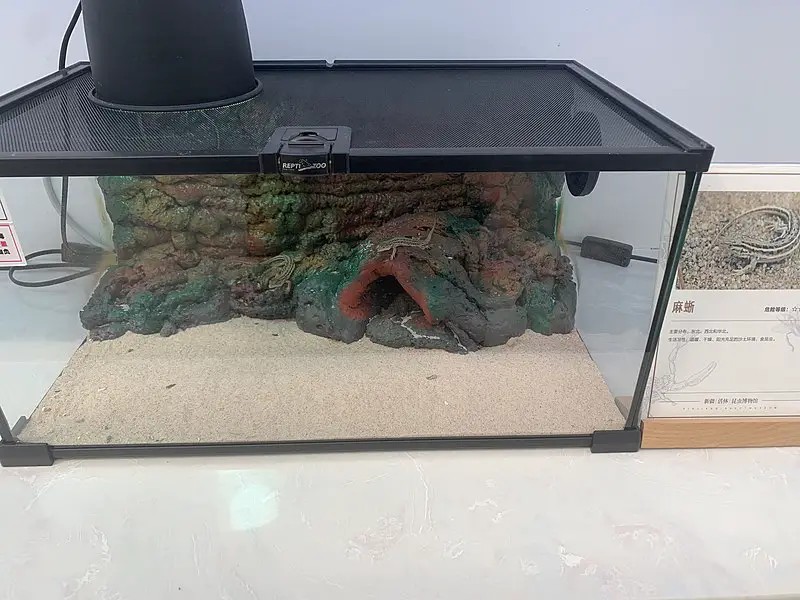Maintaining a fish tank properly is essential for keeping the fish healthy and happy. Changing the filter regularly ensures that your tank stays clean, but many factors affect when you should swap your filter out.
As a rule, you should change your filter at least once a month, but there are many factors that may make you change it more often. These factors include the size of the tank, the type of filter involved, and how many fish are in the water. If you have an ill or stressed fish, changing the filter more often will probably help it recover.
This article will also cover the different types of filters and why your aquarium needs a filter in the first place. Dive in to learn more about when and why to change the filter on your fish tank.
What Does A Filter Do?
It is important to understand what a filter does for your fish tank. As with drinking water, a fish tank filter removes bacteria and other harmful substances like ammonia (found in fish waste) from your aquarium. It also aerates the water to help your fish breathe.
It is probably worth clarifying why aerating the water matters. Believe it or not, fish need oxygen, just like creatures that live on land. They get this oxygen from the water around them using their gills. Your fish’s gills are thin and rich in blood vessels, allowing oxygen to pass into them easily.
Like human lungs, fish gills create CO2 from this process. CO2 dissolves in water, so this is usually not a problem.
Aeration adds oxygen to the water, which leads to happier fish. By keeping your filter up and running, you are not only cutting down potential sources of infection but can help your fish take a deep breath.
Types of Filters
There are three basic types of filters found in modern aquariums:
- Biological filters take advantage of your aquarium’s natural filtering processes. These filters have a porous part, such as a sponge, which encourages beneficial bacteria to break down substances such as ammonia. The idea is to let helpful bacteria do your work for you, but they still need some maintenance—and doing it wrong can be deadly.
- Chemical filters use activated carbon, resin, or tannins to purify your water. These have a time limit; once they have absorbed a certain amount of junk, you need to change the chemical portion.
- Mechanical filters are the most basic type of filter. These filters can be very effective at aerating the water but may clog easily.
Knowing what type of filter you have will help you know when (and how) to change or check it. Some filters also use multiple methods.
Factors That Affect Filter Changes
Several factors affect how often you need to change the filter on your fish tank. These include, but are not limited to:
- Tank size: The bigger your tank is, the more often you must change the filter. This is due to a greater volume of water and more occupants.
- The number of fish: The more fish you have in a tank, the more waste they produce, and the more often you need to change the filter.
- The behavior of your fish: If one of your fish looks sick or is behaving oddly, it is probably best to change the filter more often.
- Water quality: If the water in the tank looks dirty or otherwise contaminated, you may need to change the filter more frequently.
How Often Should I Change My Filter?
There are a few good ways to know when to change your filter. First, follow the instructions that came with yourfilter. There are many different types of filters out there. If you have a biological filter, be careful about the temperature and type of water that you use to clean it. Remember, you want the bacteria to help clean your tank.
If you cannot find the instruction booklet, look up the name and model number of your filter online. Even filters of the same type may have slightly different rules, so be as specific as possible when looking up information.
But there are still a few rules common across all filters. Most manufacturers recommend changing your tank’s filter at least once a month, for example. There are still several reasons to consider changing your filter more often.
A good rule of thumb is that the tank’s water should be clear. If it is cloudy, it may be a good time to change your filter, or at least see if it is working correctly. The same is true if the water smells bad. If you suspect something may be wrong with the water in your tank, it is a good idea to check your filter.
Another reason to change your filter more often is if your fish are ill or stressed. Fish may act erratically when the water is not right for them. You may even be able to stop diseases like fin rot early by changing the filter! But if your fish is already sick, change the filter more often.
Your fish can probably survive being in dirty water for a few days, but don’t gamble on it. Some species of fish are more fragile than others. In the wild, for example, catfish tolerate polluted water very well, allowing them to survive almost anywhere. Most other species of fish are significantly more fragile than that, so know the requirements for each fish you choose to keep.
Follow the rule of “once a month” if you are not sure when to change your filter. Otherwise, follow the instructions you got with your filter for changing and troubleshooting.
Conclusion
Maintaining your tank’s filter is just as important as feeding your fish. Although you should change your filter at least once a month, the size of your tank, the number of fish in your tank, and the water quality all help determine when you should change the filter. Check your filter if the water is cloudy. If a fish behaves strangely, it may be due to poor water quality.
Your fish live in the water around them; a fish living in bad water is like a human living in a place with polluted air. Changing your filter at least once a month will keep your fish happy and healthy.



